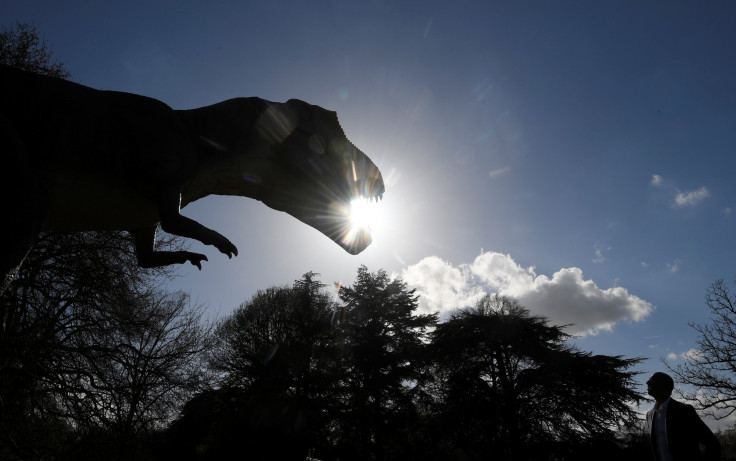Dinosaurs Became Dominant After Extinction Event 230 Million Years Ago

We all know the domination of dinosaurs, one of the most intriguing species hosted by our planet, came to an end with a massive asteroid impact some 65 million years ago. The event spurred a series of changes wiping out nearly 75 percent of life on the planet.
Though several studies have explained how dinosaurs lived and thrived before walking into the door of death, the origin of different dinosaur species has always been a mystery, mainly because of insufficient scientific evidence. We know the first dinosaurs came to be some 245 million years ago, but, how did these land-dwellers grow diversified and roam the world in the ensuing years?
The answer might be linked to another mass extinction event, one that disrupted life on the planet, and cleared the path for dinosaurs to thrive, suggests an international team of scientists.
Nearly 232 million years ago, massive volcanic eruptions took place in western Canada, something that drove bursts of global warming, acid rain and wiped out a big chunk of life on land and in the oceans. Now, scientists say this particular event, often dubbed the Carnian Pluvial Episode, allowed dinosaurs, which were in rarity before that time, to diversify and ascend to the top.
"The discovery of the existence of a link between the first diversification of dinosaurs and a global mass extinction is important,” study co-author Mike Benton said in a statement. "The extinction didn't just clear the way for the age of the dinosaurs, but also for the origins of many modern groups, including lizards, crocodiles, turtles, and mammals — key land animals today."
Benton and team posited this theory after studying dinosaur prints taken from rock sequences from the Dolomites mountain range in north Italy. The group found no to little prints on some samples, but then the number exploded on others. Dating the rock sequences in question, they were able to determine that the explosion period perfectly matched with the Carnian Pluvial Episode — when the climate change was too drastic to bear for other animal species.
"We had detected evidence for the climate change in the Dolomites,” Piero Gianolla, another author of the study, said in the statement. “There were four pulses of warming and climate perturbation, all within a million years or so. This must have led to repeated extinctions."
That said, it is also worth noting Dolomite wasn’t the only site to support this theory. The group, led by Massimo Bernardi from Bristol's School of Earth Sciences, U.K., also found evidence of population explosion just around the same time in Argentina and Brazil, countries where first extensive skeletons of dinosaurs were found.
"We were excited to see that the footprints and skeletons told the same story,” Bernardi said. “We had been studying the footprints in the Dolomites for some time, and it's amazing how clear cut the change from 'no dinosaurs' to 'all dinosaurs' was."
The study, titled "Dinosaur diversification linked with the Carnian Pluvial Episode," was published on April 16, in the journal Nature Communications.
© Copyright IBTimes 2024. All rights reserved.





















